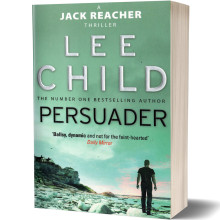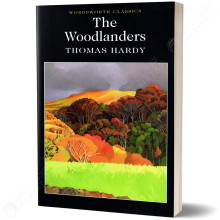About the Book
‘Fifteen men on the dead man’s chest-Yo-ho-ho and a bottle of rum!’
Treasure Island is a tale of pirates and villains, maps, treasure and shipwreck, and is perhaps the best adventure story ever written.
When young Jim Hawkins finds a packet in Captain Flint’s sea chest, he could not know that the map inside it would lead him to unimaginable treasure. Shipping as cabin boy on the Hispaniola, he sails with Squire Trelawney, Captain Smollett, Dr Livesey, the sinister Long John Silver and a frightening crew to Treasure Island. There, mutiny, murder and mayhem lead to a thrilling climax.
About the Author
Robert Louis Stevenson
One of the recurring themes in the works of Robert Louis Stevenson (1850 -1894) is the mixture of good and evil in mankind, and the impossibility of separating the two. His two most enduring books, 'Treasure Island' and 'The Strange Case of Dr. Jekyll and Mr Hyde' illustrate this point, and the depth of his characterisation was very influential on later writers.
Above all, Robert Louis Stevenson was an artful storyteller and while the subject of his tales ranged from the strange and ghostly to rumbustious adventures – from The Strange Case of Dr Jekyll and Mr Hyde to Kidnapped – his main raison d’etre was to thrill and entertain. And, at this, he was very successful.
Stevenson was born in Edinburgh in 1850 and as a child was lonely and chronically ill, suffering from a weak chest, which would trouble him throughout his life. He was expected to follow his father’s profession in engineering and with this, in view, he entered Edinburgh University in 1867 but three years later he switched to law. However, his real interest was in writing and by 1875 he had established himself locally as an author. The same year he was called to the bar and embarked on a love affair which eventually led to marriage in 1880 with an American divorcee, Fanny Osbourne.
In 1878 he developed an insatiable appetite for journeying abroad, the outcome of which was his early travel books including Travels With a Donkey In the Cevennes. In 1879 he left for America, spending some time on the West Coast, and living for a while in San Francisco. where for several months he struggled ‘all alone on forty-five cents a day, and sometimes less, with quantities of hard work and many heavy thoughts,’ in an effort to support himself through his writing. But by the end of the winter, his health was broken again and he found himself at death’s door. When his father heard of his condition, he cabled him money to help him through this period.
For the next seven years, between 1880 and 1887, Stevenson searched in vain for a place of residence suitable to his state of health. He spent his summers at various places in Scotland and England, including Westbourne in Dorset, a residential area in Bournemouth. It was during his time here that he wrote the story Strange Case of Dr Jekyll and Mr Hyde. To avoid the harsh British winters Stevenson travelled to France where for a time he enjoyed almost complete happiness. ‘I have so many things to make life sweet for me,’ he wrote, ‘it seems a pity I cannot have that other one thing – health.’ However, in spite of his ill health, he produced the bulk of his best-known work during these years: Treasure Island, his first widely popular book; Kidnapped; The Black Arrow; and two volumes of poetry, A Child’s Garden of Verses and Underwoods.
In 1888, he and Fanny left for the South Seas in their yacht Casco and for nearly three years he wandered the eastern and central Pacific, stopping for extended stays at the Hawaiian Islands, Tahiti, New Zealand, and the Samoan Islands. During this period, he completed his finest novel of Scottish revolutionary history, The Master of Ballantrae, as well as composing two ballads based on the legends of the islanders, and wrote the wonderful supernatural tale The Bottle Imp. In 1890, Stevenson purchased a tract of about 400 acres in Upolu, an island in Samoa. Here, he established himself in the village of Vailima. He took the native name Tusitala, Samoan for ‘Teller of Tales’. On 3 December 1894, Stevenson was talking to his wife and straining to open a bottle of wine when he collapsed. He died within a few hours, of a suspected cerebral haemorrhage. He was only forty-four years old. It is remarkable that a man so troubled with crippling ill health could produce such a rich treasury of prose. His later works included The Black Arrow (1888), The Wrong Box (1889), The Wrecker (1892) and The Weir of Heriston (1896).
The Writers’ Museum near Edinburgh’s Royal Mile devotes a room to Stevenson, containing some of his personal possessions from childhood through to adulthood. Another memorial in Edinburgh stands in West Princes Street Gardens below Edinburgh Castle; it is a simple upright stone inscribed with ‘RLS – A Man of Letters 1850–1894’. In 2013, a statue of Stevenson as a child with his dog was unveiled by the author Ian Rankin outside Colinton Parish Church. However, it is true to say that the real monuments to Stevenson’s life and works are his books.
- Langue
- Anglaise
- Dimensions
- 127 mm x 198 mm
- Edition
- Wordsworth Editions
- Collection
- Wordsworth Classics Complete and Unabridged
- Auteur
- Robert Louis Stevenson
- Poids
- 154 g
- Nombre de pages
- 224 pages
- Date de Parution
- 01/05/1993
- Série
- Children's Classics
































